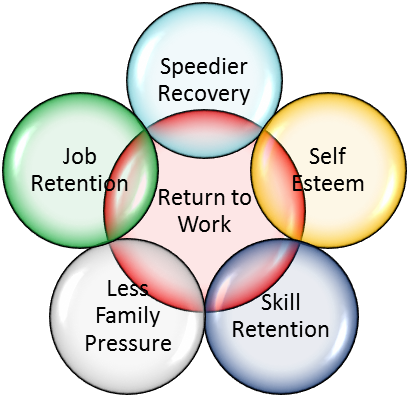Return to Work

Employee Responsibilities - The essential traits that underpin good injury management are leadership, proactiveness and foresight. An employer or manager who understands the win win benefits of Injury Management and RTW procedures will work hard to:
- Prepare a RTW plan and provide trainings on it e.g. during new employee inductions.
- Care for the injured employee, including driving the worker to the medical centre.
- Offer to meet with the doctor to explain the alternative duties that are available.
- Contact ACC if alternative duties will last more than 1 week and provide the case manager with all forms and correspondence.
- Prepare the workplace to receive the injured worker; re-shuffling duties if necessary.
- Develop a rehabilitation plan with the worker (what duties will be done and timings).
- Monitor the rehabilitation plan, remaining flexible to make any necessary adjustments.

Injured Worker Responsibilities - the internet has many resources that explain the benefits of RTW. Â Being convinced of them an injured worker is more likely to be supportive and to provide the necessary consents to make RTW run smoothly.
Early Intervention - An injured Employee may take the remainder of the injury-day to visit a doctor and to recover. The employer should monitor this initial period closely and make provisions for alternative duties to commence by the next shift if it can be achieved safely.
Develop a Personalised Employee Rehabilitation Plan - Early and purposeful communications are often the difference between success and failure. If practical, use the early stages of time, which is often spent waiting in the emergency department (or surgery) to complete system forms and to discuss the process including alternative duties.
Remember, any duty providing it is safe for the injured worker and benefits the employer business can be used as an alternative duty.
See Promapp: Develop a Rehabilitation Plan. Examples of duties, used successfully in the past, include first-aid training, study for an enrolled unit standard, safe behaviour observations (SBO), in-cab driver assessments.
View this article in Safety Bulletin 120
